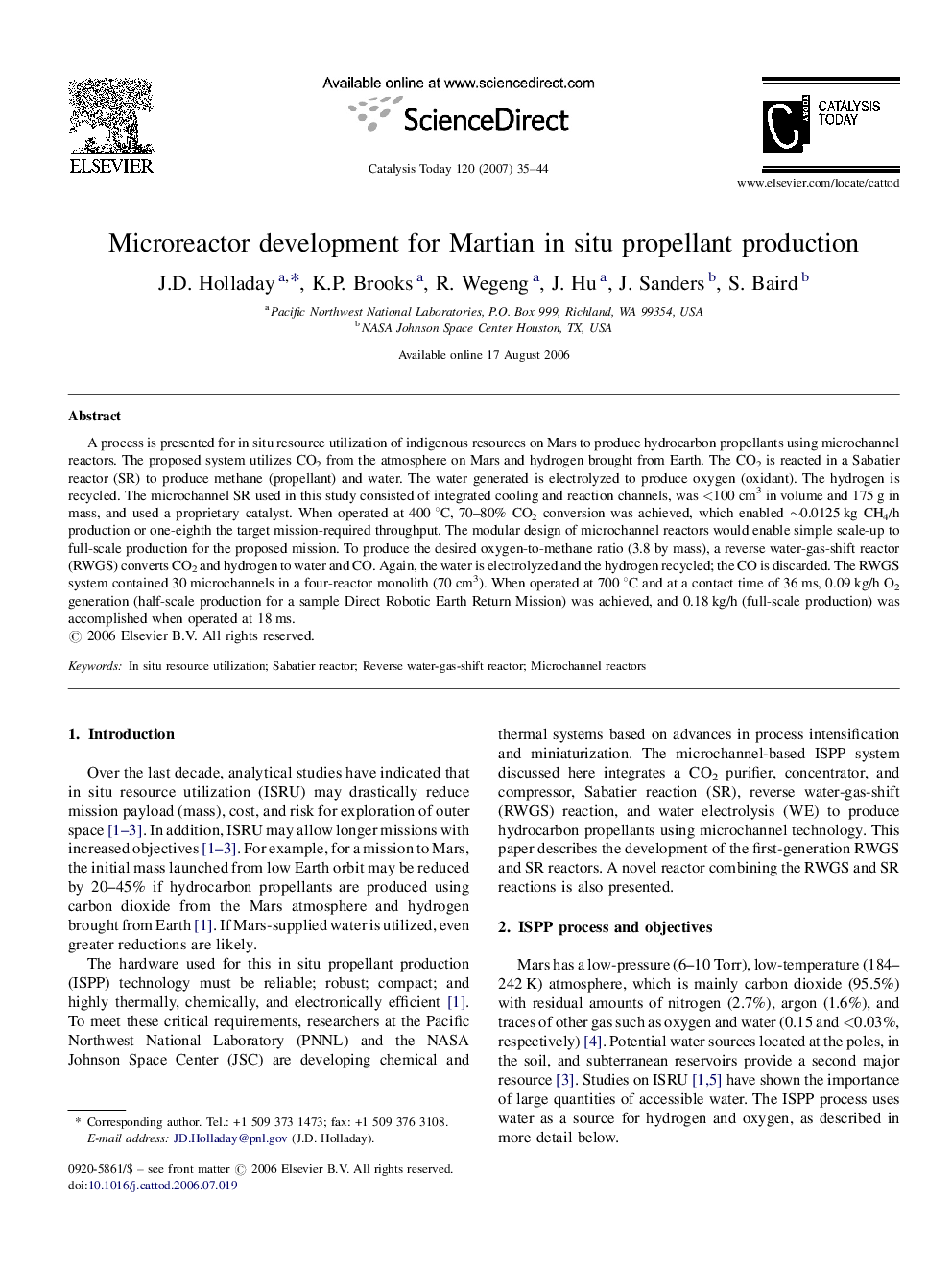| Article ID | Journal | Published Year | Pages | File Type |
|---|---|---|---|---|
| 57772 | Catalysis Today | 2007 | 10 Pages |
A process is presented for in situ resource utilization of indigenous resources on Mars to produce hydrocarbon propellants using microchannel reactors. The proposed system utilizes CO2 from the atmosphere on Mars and hydrogen brought from Earth. The CO2 is reacted in a Sabatier reactor (SR) to produce methane (propellant) and water. The water generated is electrolyzed to produce oxygen (oxidant). The hydrogen is recycled. The microchannel SR used in this study consisted of integrated cooling and reaction channels, was <100 cm3 in volume and 175 g in mass, and used a proprietary catalyst. When operated at 400 °C, 70–80% CO2 conversion was achieved, which enabled ∼0.0125 kg CH4/h production or one-eighth the target mission-required throughput. The modular design of microchannel reactors would enable simple scale-up to full-scale production for the proposed mission. To produce the desired oxygen-to-methane ratio (3.8 by mass), a reverse water-gas-shift reactor (RWGS) converts CO2 and hydrogen to water and CO. Again, the water is electrolyzed and the hydrogen recycled; the CO is discarded. The RWGS system contained 30 microchannels in a four-reactor monolith (70 cm3). When operated at 700 °C and at a contact time of 36 ms, 0.09 kg/h O2 generation (half-scale production for a sample Direct Robotic Earth Return Mission) was achieved, and 0.18 kg/h (full-scale production) was accomplished when operated at 18 ms.
